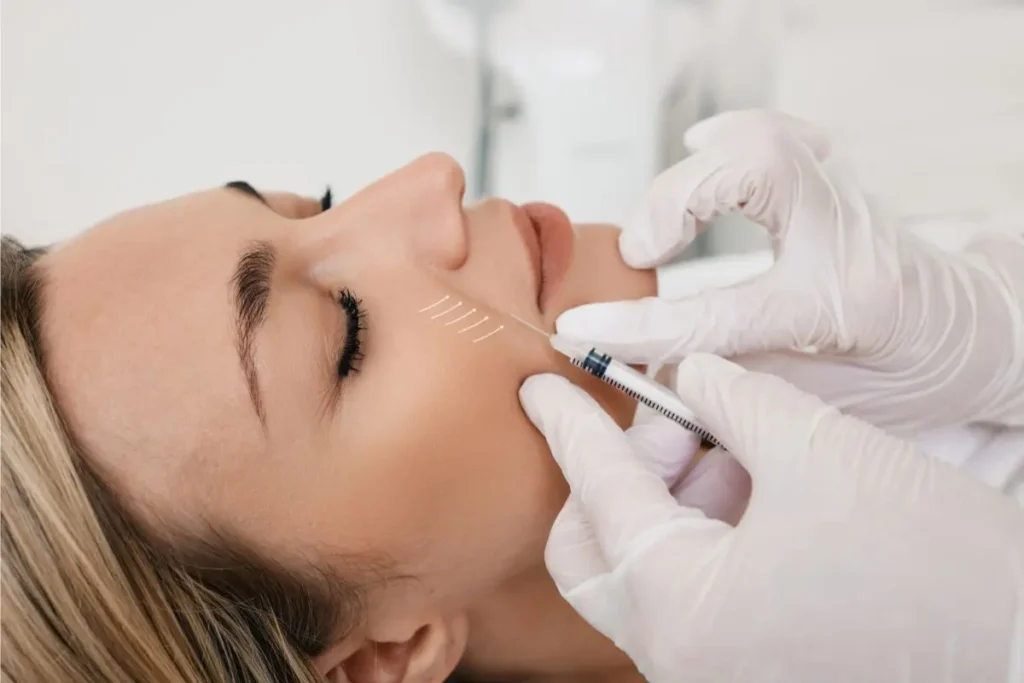
Cosmetic injectables are substances introduced beneath the skin’s surface to alter one’s appearance. They are often used to address signs of aging, like fine lines and wrinkles, or to enhance facial contours. Among the most well-known cosmetic injectables is Botox, which is frequently used to address wrinkles around the mouth, often referred to as smile lines. Here’s more information on Botox injections and how they can benefit you:
How Does Botox Work?
Botox is the brand name for a specific type of neurotoxin derived from botulinum toxin type A, which is produced by the bacterium Clostridium botulinum. In a controlled, purified form, it is used for cosmetic and medical purposes. When injected into targeted facial muscles, Botox temporarily blocks nerve signals that command those muscles to contract. This process interrupts the communication between the nerves and the brain, causing the muscle to relax temporarily.
How Nerve Signals are Blocked
Botox functions by temporarily blocking nerve signals in the muscles where it is injected. When these signals are interrupted, the targeted muscle can no longer contract with the same force. By reducing the intensity and frequency of these muscle contractions, Botox can help prevent the formation of new lines and the deepening of existing ones. This preventive aspect is why some individuals seek treatment before wrinkles become deeply set.
What the Injection Process Is Like
Undergoing a Botox treatment is a straightforward and minimally invasive process. While some improvement may be noticed within a few days, full results typically become visible within one to two weeks. The effects of Botox generally last several months, after which a follow-up treatment can be done to maintain your results. Here are some typical steps of a session:
- Consultation: The first step is a consultation with a licensed healthcare professional. During this session, your provider will discuss your goals, assess the areas of concern, and determine if neurotoxin injections are the right option for you.
- Preparation: Once you decide to proceed, your provider will clean the treatment area and may apply a topical anesthetic to minimize discomfort.
- Injection: Using a fine needle, the provider will inject small, targeted doses of Botox into specific muscles. The number of injections and the quantity of neurotoxin solution administered will depend on your treatment area and cosmetic goals. The entire injection process typically takes just a few minutes.
- Discussion of Post-Treatment Care: After the injections, your provider will discuss aftercare instructions with you. These may include avoiding strenuous activity, refraining from lying down for several hours, and avoiding rubbing the treated areas.
How Does Botox Reduce and Prevent Wrinkles?
When you smile, frown, or squint, the muscles under your skin contract, causing the skin to fold. As skin ages and loses elasticity, these lines can become permanent fixtures on the face. The repeated contraction of facial muscles over many years results in the formation of lines and wrinkles on the overlying skin. By limiting the activity of specific muscles, Botox injections can soften the appearance of existing dynamic wrinkles. The skin over the relaxed muscle smooths out, leading to a less wrinkled appearance.
How Often Can You Get Botox?
While neurotoxin injections do not have permanent effects, cosmetic results typically last for three to four months. As the neurotoxin gradually wears off, muscle activity returns, and fine lines and wrinkles will begin to reappear. To maintain your results, follow-up treatments are necessary. A qualified provider can recommend a treatment schedule based on your individual needs and goals.
Botox is used to address dynamic wrinkles in several areas of the face. Some common treatment areas include:
- Forehead Lines
- Eyebrow Frown Lines
- Crow’s Feet
- Bunny Lines
- Smile Lines
Schedule an Appointment
To learn more about Botox injections for your cosmetic goals, contact a qualified dermatologist today. An expert provides detailed information, reviews your medical history, and develops a personalized treatment plan. They can help you understand if neurotoxins are the right injectables for you.







